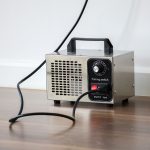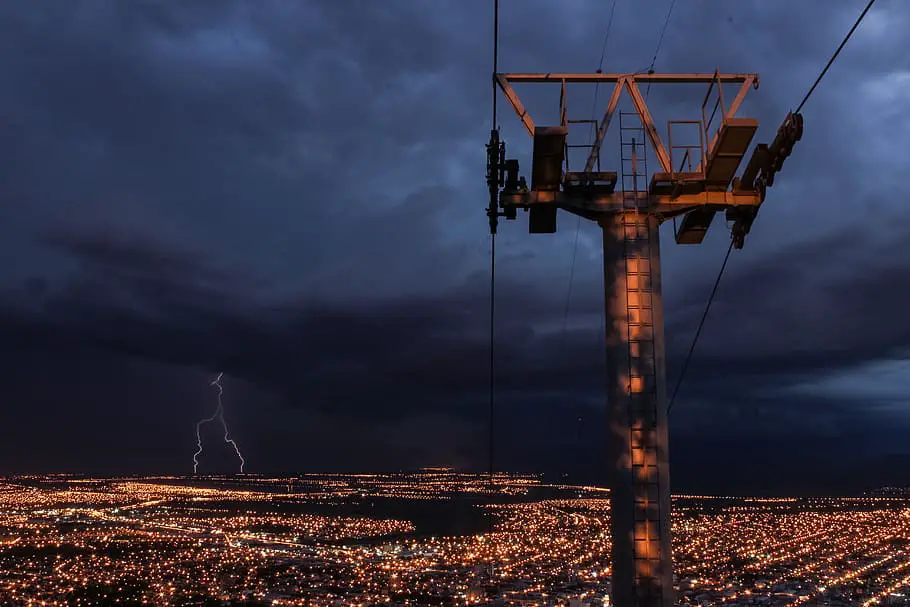Table of Contents
How Long to Wait After Using Ozone Generator
For safe ozone generator use, it’s crucial to wait a minimum of 2-4 hours before re-entering the treated area, ensuring complete ozone dissipation. This period can vary based on room size, ventilation, and ozone levels used. Enhance safety further by extending this waiting time, particularly in homes with vulnerable individuals like pets or children, maintaining a safe distance to prevent exposure.
Introduction
When considering the use of ozone generators indoors, understanding the dissipation time of ozone becomes crucial for ensuring safety and effectiveness. Ozone generators are often employed for air purification, odor elimination, and disinfecting spaces.
While ozone is powerful for such applications, it’s essential to know how long it takes for ozone to break down after use to avoid potential health risks associated with ozone exposure.
Ozone Dissipation Times by Environment
| Environment | Estimated Dissipation Time | Factors Influencing Time |
|---|---|---|
| Small Car | 30 minutes to 1 hour | Ventilation, sunlight exposure, interior materials |
| Residential Room (Small) | 1 to 2 hours | Room size, ventilation, humidity, temperature |
| Residential Room (Large) | 2 to 4 hours | Room size, ventilation, humidity, temperature |
| Commercial Space | 2 to 6 hours | Space size, ventilation system, number of ozone generators used |
| Water Treatment | Varies depending on volume | Water volume, ozone concentration, water temperature |
Note: These times are estimates and can vary significantly based on specific conditions and ozone generator models. Always refer to the manufacturer’s guidelines and consider the specific environmental factors at play.
 Ozone Dissipation in Specific Environments
Ozone Dissipation in Specific Environments
In a Car
- Dissipation Time: Typically, ozone will dissipate within 30 minutes to 1 hour in a small car, assuming moderate ventilation and ambient temperatures.
- Tips for Acceleration: Opening all doors and windows after treatment can speed up the process. Parking in direct sunlight can also help due to the increase in temperature and UV exposure aiding ozone breakdown.
In a House
- Room Size Variation: Smaller rooms might require only 1 to 2 hours, while larger spaces could need up to 4 hours for ozone to dissipate safely.
- Enhancing Dissipation: Utilize ceiling fans, open windows, and air conditioning systems to improve air circulation and expedite ozone breakdown.
Commercial Spaces
- Extended Times: Larger commercial spaces can expect dissipation times ranging from 2 to 6 hours, heavily influenced by the efficiency of the existing ventilation systems.
- Effective Practices: For large areas, consider sequential or zone-based ozone treatment to manage dissipation times better and reduce overall downtime.
Additional Considerations
- Safety Margin: Always err on the side of caution by adding a safety margin to the estimated dissipation times, especially in spaces with limited ventilation or where sensitive individuals may be exposed.
- Monitoring: If possible, use ozone detectors to monitor the ozone level in real-time, ensuring it falls back to safe levels before reoccupation.
Ozone Dissipation Indoors
Unlike the natural atmospheric conditions, the indoor environment can significantly vary, influencing how quickly ozone reverts to oxygen. Several factors affect this process:
- Ventilation: Good ventilation speeds up the dissipation of ozone. Opening windows and doors or using fans can help circulate fresh air and reduce ozone concentration more quickly.
- Room Temperature: Similar to the natural environment, higher indoor temperatures can accelerate the breakdown of ozone.
- Indoor Materials: Various materials found indoors can react with ozone, leading to a faster breakdown. Fabrics, carpets, and certain building materials can absorb and neutralize ozone molecules.
- Relative Humidity: Higher humidity levels can enhance the reactivity of ozone, leading to a quicker breakdown, though this can also depend on the specific conditions and materials present in the environment.
 Technological Aspects of Ozone Generators
Technological Aspects of Ozone Generators
Types of Ozone Generators
1. Corona Discharge Ozone Generators:
- How They Work: These generators simulate lightning via an electrical discharge to split oxygen molecules, which then recombine to form ozone.
- Pros:
- High ozone output, making them suitable for commercial and industrial applications.
- Efficient in terms of energy consumption relative to the amount of ozone produced.
- Cons:
- Can produce nitrogen oxides as byproducts in air-based systems, which require additional filtration.
- Generally more expensive and complex, making them less accessible for casual or home use.
2. Ultraviolet (UV) Light Ozone Generators:
- How They Work: UV ozone generators use ultraviolet radiation to split oxygen molecules, which recombine to form ozone, mimicking the natural formation of ozone in the upper atmosphere.
- Pros:
- Simpler and more cost-effective compared to corona discharge generators.
- No risk of producing harmful nitrogen oxides as byproducts.
- Cons:
- Lower ozone output compared to corona discharge generators, making them more suitable for smaller spaces or less intensive applications.
- UV lamps need to be replaced periodically, adding to maintenance requirements.
3. Electrolytic Ozone Generators:
- How They Work: These generators produce ozone by passing an electric current through water, splitting water and oxygen molecules to produce ozone.
- Pros:
- Produce very pure ozone without nitrogen byproducts.
- Suitable for applications requiring high-purity ozone, like certain medical or laboratory settings.
- Cons:
- Lower ozone output compared to corona discharge methods.
- Primarily designed for use in water treatment applications, limiting their versatility.
 OdorFree Villa 3000 Ozone Generator for Eliminating Odors, permanently removing Tobacco, Pet and Musty Odors at their Source – Easily Treats Up To 3000 Sq Ft
OdorFree Villa 3000 Ozone Generator for Eliminating Odors, permanently removing Tobacco, Pet and Musty Odors at their Source – Easily Treats Up To 3000 Sq Ft
See Picture Here
Choosing the Right Generator
When selecting an ozone generator, consider the following factors to ensure it meets your specific needs:
1. Space Size and Intended Use:
- Determine the volume of the area where the ozone generator will be used and the primary purpose (odor removal, air purification, disinfection). Larger spaces or more demanding applications may require generators with higher ozone output.
2. Ozone Output Levels:
- Look for generators that allow you to adjust ozone output levels. This feature provides flexibility for different applications and helps prevent the overuse of ozone.
3. Generator Type:
- For home or small-scale applications, a UV light ozone generator may be sufficient. In contrast, commercial or industrial settings might benefit from the higher output of a corona discharge generator.
4. Safety Features:
- Choose generators equipped with timers, automatic shut-off features, and ozone level detectors to enhance safety and ease of use.
5. Maintenance and Operating Costs:
- Consider the long-term maintenance requirements, including the need for replacement parts like UV lamps or filters. Evaluate the energy efficiency of the generator as it impacts operating costs.
6. Reviews and Manufacturer Reputation:
- Research customer reviews and the manufacturer’s reputation in the market. Look for products with positive feedback regarding reliability, effectiveness, and customer service.
By considering these factors and understanding the different types of ozone generators, you can make a well-informed decision that ensures the safety and effectiveness of your ozone treatment applications.
Table 2: Comparison of Ozone Generator Types
| Feature | Corona Discharge | Ultraviolet Light | Electrolytic |
|---|---|---|---|
| Ozone Output | High | Moderate | Low to Moderate |
| Best Used For | Commercial/Industrial | Home/Small Spaces | Water Treatment |
| Byproduct Formation | Possible nitrogen oxides | None | None |
| Maintenance Level | High (requires regular checks) | Moderate (UV lamps replacement) | Low |
| Cost | Higher initial & operating | Lower initial, moderate operating | Moderate to High initial |
| Energy Efficiency | Moderate to High | Moderate | High |
Frequently Asked Questions (FAQs)
1. How long does it take for ozone to dissipate after using an ozone generator?
- Typically, you should wait 2-4 hours for ozone to dissipate in a residential setting. This can vary based on factors like room size, ventilation, and the ozone concentration used.
2. Is it safe to be in the room while using an ozone generator?
- No, it’s unsafe to be in the room during ozone treatment. Ozone can cause respiratory irritation and other health issues. Always vacate the area being treated and ensure pets and plants are also removed.
3. Can ozone generators remove strong odors like smoke or pet odors?
- Yes, ozone generators are effective in removing strong odors, including smoke and pet odors, as ozone can oxidize and neutralize odor-causing molecules.
4. How do I know which ozone generator is right for my space?
- Select an ozone generator based on the size of the space you want to treat and the intended application. Consider factors like ozone output, adjustability, and safety features.
5. Are there any materials that should be removed before using an ozone generator?
- Yes, remove or protect vulnerable materials like rubber, certain plastics, and indoor plants. Ozone can cause degradation or damage to these materials over time.
6. How can I ensure that my ozone generator is used safely?
- Follow the manufacturer’s instructions carefully, use the generator in unoccupied spaces, and adhere to recommended wait times before re-entering the treated area. Consider using ozone detectors to monitor levels.
7. Can ozone treatment eliminate mold and bacteria?
- Ozone is a powerful disinfectant and can kill bacteria, viruses, and some forms of mold. However, it may not penetrate deeply into porous materials, so it’s not a complete solution for mold remediation.
8. How often should I use an ozone generator in my home or office?
- Use an ozone generator as needed for odor control or air purification, but avoid frequent or continuous use to prevent potential health risks and material degradation. Always prioritize ventilation and air quality.


 Technological Aspects of Ozone Generators
Technological Aspects of Ozone Generators OdorFree Villa 3000 Ozone Generator for Eliminating Odors, permanently removing Tobacco, Pet and Musty Odors at their Source – Easily Treats Up To 3000 Sq Ft
OdorFree Villa 3000 Ozone Generator for Eliminating Odors, permanently removing Tobacco, Pet and Musty Odors at their Source – Easily Treats Up To 3000 Sq Ft





